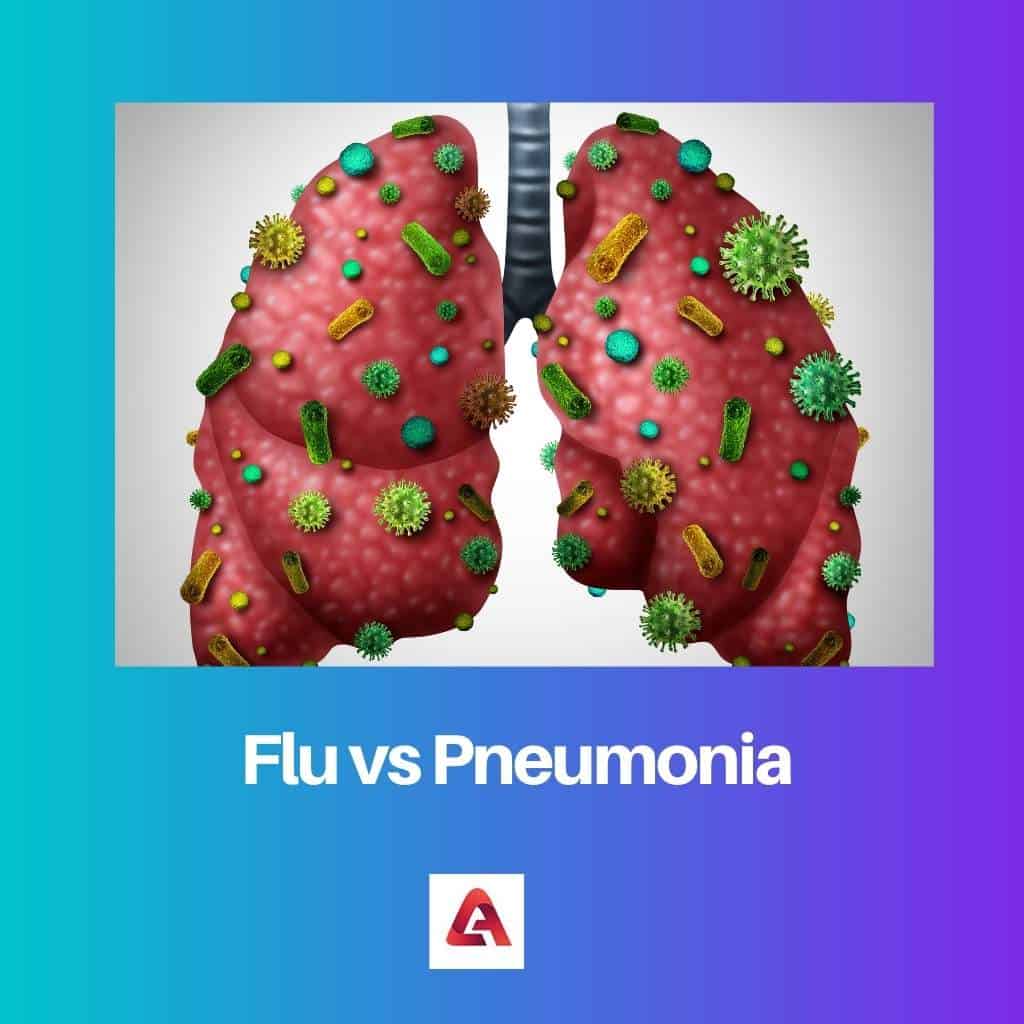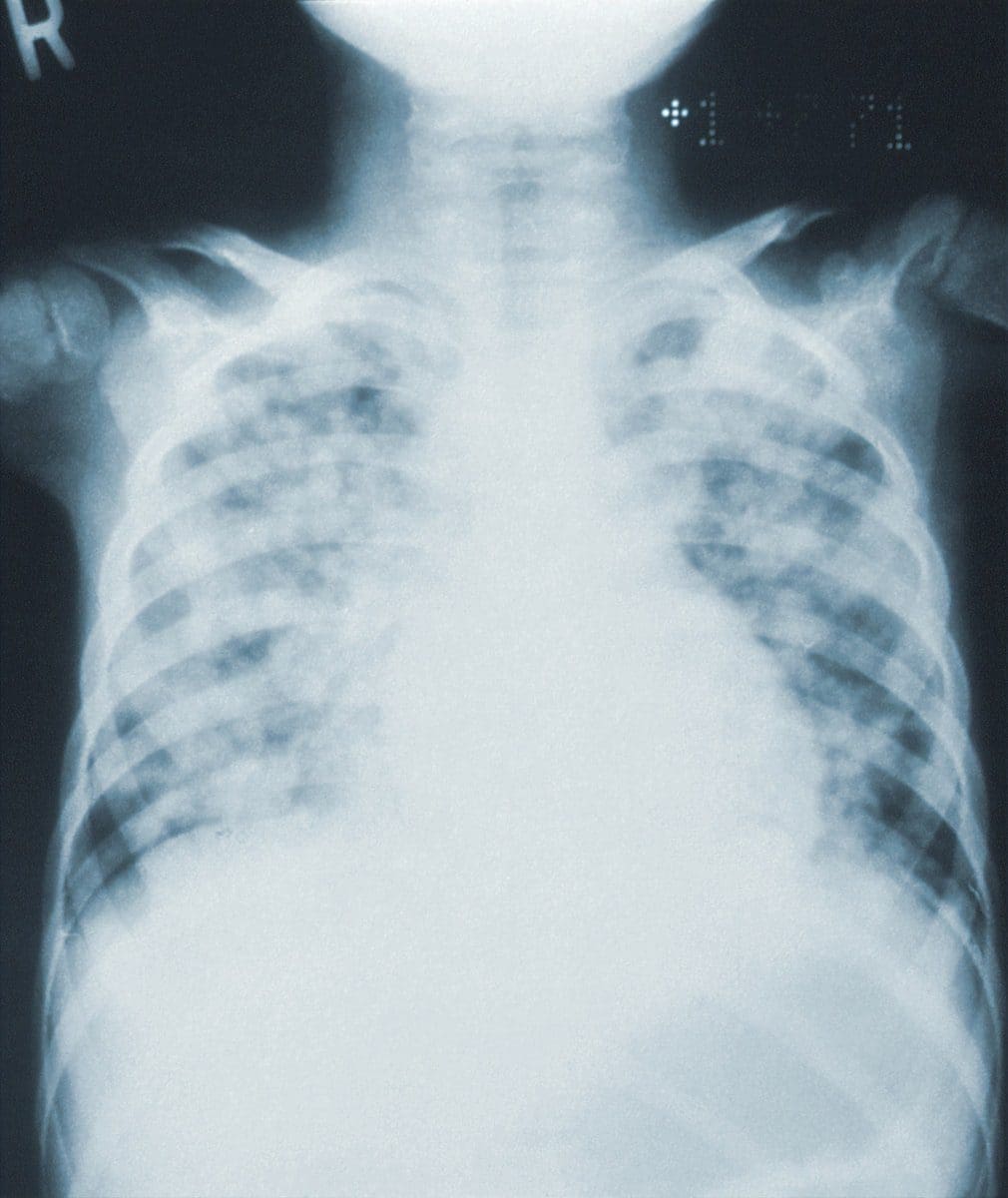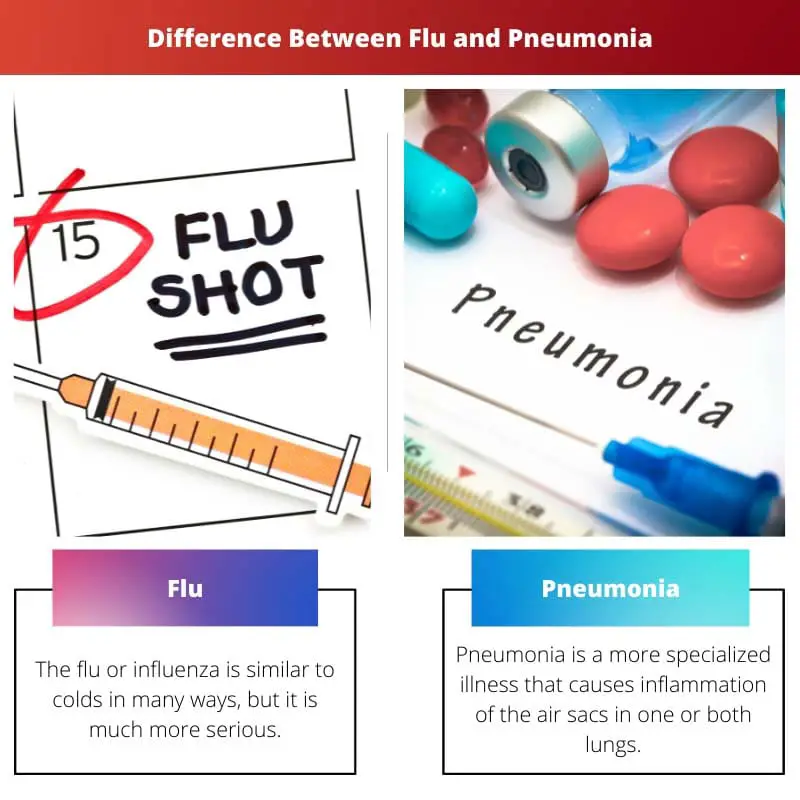Coughs, stuffy noses, fevers, and a slew of other viruses are on their way when the temperature cools. Influenza (flu) and pneumonia are the two most debilitating diseases that occur at this time of the year. Both the flu and pneumonia are severe diseases, and the flu may lead to pneumonia.
Key Takeaways
- The influenza virus causes flu, while viruses, bacteria, or fungi can cause pneumonia.
- Flu symptoms appear suddenly, including fever, body aches, and fatigue, whereas pneumonia symptoms develop more slowly and are characterized by chest pain, cough, and shortness of breath.
- Vaccines are available for the flu, some types of pneumonia, and early treatment can help prevent complications.
Flu vs Pneumonia
The difference between flu and pneumonia is that flu occurs without warning, while pneumonia takes longer to develop and may be a consequence of flu. A viral infection causes the flu, while pneumonia may be caused by either a bacterial or viral illness. Pneumonia is a lung infection that causes more respiratory symptoms, while the flu causes muscle aches and pains as well as tiredness.

Flu (influenza) is a highly contagious viral infection and one of the most serious diseases in winter. Influenza is readily transmitted from person to person, via coughing or sneezing. Cough, cold, and fever are all symptoms of the flu.
Pneumonia occurs when the congestion from these diseases spreads to the lungs. Pneumonia is an illness or inflammation of the lungs that may be fatal.
Pus and other fluids can block the air sacs and prevent oxygen from entering the circulatory system. The body’s cells cannot function correctly if there is insufficient oxygen in the blood, which may lead to death.
Comparison Table
| Parameters of Comparison | Flu | Pneumonia |
|---|---|---|
| Caused | Caused by Influenza virus. | It settles in the lungs where germs, bacteria, and the virus can cause inflammation. |
| Serious | More serious than the common cold. | Most serious should be treated |
| Effects | Nose, throat, and lungs. | Lungs. |
| Soreness and Pain | Sore muscles in your legs, arms, body. | Pain in the chest. |
| Symptoms | Nausea and headache, loss of appetite, high fever, chills, sweat. | Coughing with mucus, disorientation, extreme fatigue. |
What is Flu?
Although the typical cold is not a big problem (adults may catch two to three colds a year, while children may catch eight), the flu or influenza is similar to colds in many ways, but it is much more serious.
Both are viral respiratory diseases, but although there are more than 200 viruses that can cause colds, there are far fewer influenza viruses.
On the other hand, these influenza viruses are constantly evolving and adapting, which is why it feels different every time they are infected, and just because you’ve had it once doesn’t guarantee your body will identify it and deal with it more quickly the next time.
The flu is most infectious in the first three to four days after symptoms appear, although it may spread from one day before symptoms appear to up to a week after you get ill.
While some cold and flu symptoms are similar, such as a stuffy nose, cough, headaches, muscular pains, and tiredness, flu symptoms will be more severe. Also suffer from fever, nausea, chills, sweats, and a lack of appetite.
The symptoms will come on fast as well. Antibiotics don’t work on viruses, so most people don’t need to see a doctor for the flu (but extremely young or elderly people, or those with specific medical problems, should).

What is Pneumonia?
Pneumonia, like the flu, is a respiratory illness. Pneumonia, on the other hand, is a more specialized illness that causes inflammation of the air sacs in one or both lungs.
In addition, unlike the flu, pneumonia may be caused by a virus, bacteria, or fungus, but bacterial infections are the most frequent cause of pneumonia in adults.
Streptococcus pneumonia, the most frequent cause of bacterial pneumonia, has a vaccination, but it’s only advised for infants, adults over 65, and people with long-term health problems.
Cough, fever, chills, sweating, headaches, nausea, and exhaustion are all symptoms that are comparable to the flu. It’s also possible that you’re having trouble breathing.
You may not realize you need to visit a doctor until you’ve been ill for a long time since the symptoms are so similar. An evaluation, which may include listening to your lungs and perhaps a chest x-ray or blood test, can help a doctor decide whether you have pneumonia.
If the doctor suspects bacterial pneumonia, antibiotics (or antifungals if the infection is caused by a fungus) will most likely be prescribed. Pneumonia is infectious regardless of what causes it.
The same precautions that you use to avoid colds and flu, washing your hands, wiping germy surfaces, and covering your mouth while coughing and sneezing, apply to pneumonia as well.

Main Differences Between Flu and Pneumonia
- The influenza virus causes flu, while pneumonia causes inflammation in the lungs due to germs, bacteria, and viruses.
- The flu is a more severe illness than a typical cold. While pneumonia is the most severe illness, it should be treated.
- Flu affects the nose, throat, and lungs, whereas pneumonia affects the lungs severely.
- Flu causes sore muscles in your legs, arms, and body, whereas pneumonia causes pain in the chest severely.
- Symptoms of Flu are Nausea and headache, loss of appetite, high fever, chills, and sweat, whereas symptoms of pneumonia are coughing with mucus, disorientation, and extreme fatigue.

- https://scholar.archive.org/work/jeqh4kn5jjaipjvuzprts2tgza/access/wayback/http://www.drmajzun.com/app/download/777505104/Pneumonia+during+flu.pdf
- https://www.ingentaconnect.com/content/iuatld/ijtld/2012/00000016/00000005/art00022

This is a very insightful article. I appreciate you enlightening us on the differences between flu and pneumonia and how to differentiate their symptoms and effects.
The comparison between flu and pneumonia is clearly explained in this article. The valuable insights elevate the readers’ understanding of these diseases.
This article’s comparison table is a great tool for understanding and differentiating between flu and pneumonia. It enhances the article’s informative value.
I have acquired a better understanding of flu and pneumonia from this article. The well-explained symptoms and comparison are truly enlightening.
This article makes a valuable point on the symptoms and treatments of flu and pneumonia. Both are severe diseases that need proper attention and care.
The article successfully provides valuable insights into symptoms and effects of flu and pneumonia, and the importance of early treatment. Well written and informative.
This article does a fantastic job highlighting the differences between flu and pneumonia. It’s a great resource to understand and recognize the signs and symptoms of these diseases.
Learning about the differences between flu and pneumonia from this article was illuminating. I appreciate the attention to detail and the clear language used.
The information presented here is extremely beneficial. It stands out in providing clear distinctions between flu and pneumonia.
The article does a great job explaining the contrast between flu and pneumonia, and the comparison table is very clear and helpful.